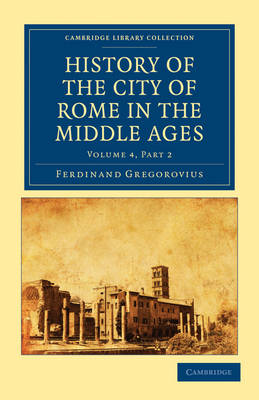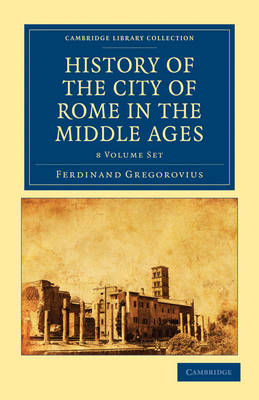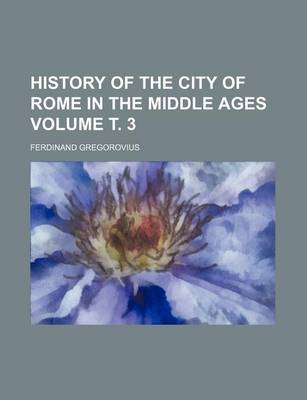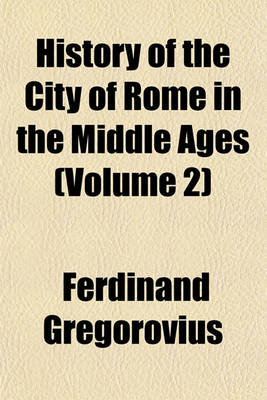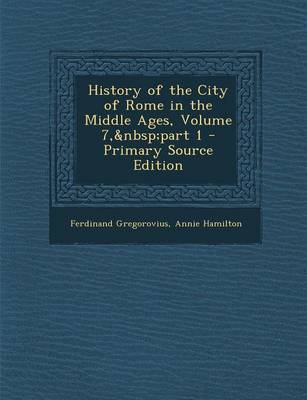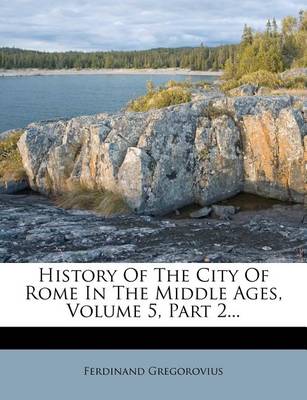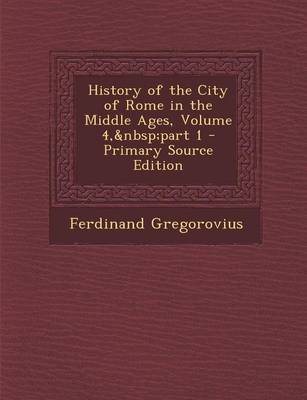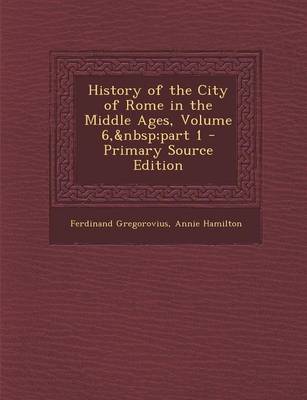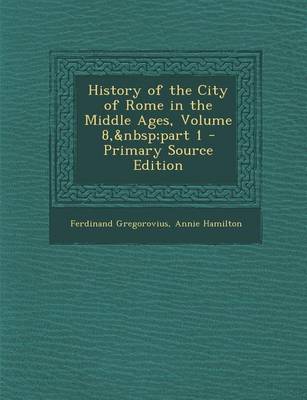Cambridge Library Collection - Medieval History
1 primary work • 15 total works
Volume 7
History of the City of Rome in the Middle Ages 8 Volume Set in 13 Paperback Pieces
by Ferdinand Gregorovius
History of the City of Rome in the Middle Ages Volume . 3
by Ferdinand Gregorovius
History of the City of Rome in the Middle Ages (Volume 2)
by Ferdinand Gregorovius
History of the City of Rome in the Middle Ages, Volume 7, Part 1
by Ferdinand Gregorovius and Annie Hamilton
History of the City of Rome in the Middle Ages, Volume 5, Part 2...
by Ferdinand Gregorovius
History of the City of Rome in the Middle Ages, Volume 4, Part 1
by Ferdinand Gregorovius
History of the City of Rome in the Middle Ages, Volume 6, Part 1
by Ferdinand Gregorovius and Annie Hamilton
History of the City of Rome in the Middle Ages: Volume 5, Part 1
by Ferdinand Gregorovius
History of the City of Rome in the Middle Ages: Volume 1
by Ferdinand Gregorovius
History of the City of Rome in the Middle Ages: Volume 4, Part 2
by Ferdinand Gregorovius
History of the City of Rome in the Middle Ages, Volume 8, Part 1
by Ferdinand Gregorovius and Annie Hamilton
History of the City of Rome in the Middle Ages: Volume 7, Part 2
by Ferdinand Gregorovius
History of the City of Rome in the Middle Ages: Volume 6, Part 2
by Ferdinand Gregorovius
